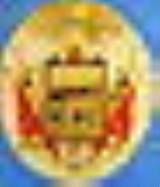
Siege of Nicomedia
Encyclopedia
Introduction
From 1299, the newly founded Turkic state of the Ottomans had been slowly but surely capturing territory from the Byzantine GreeksByzantine Greeks
Byzantine Greeks or Byzantines is a conventional term used by modern historians to refer to the medieval Greek or Hellenised citizens of the Byzantine Empire, centered mainly in Constantinople, the southern Balkans, the Greek islands, Asia Minor , Cyprus and the large urban centres of the Near East...
. The loss of Nicaea was the beginning of a series of Ottoman expansion that lead to final dissolution of the Byzantine empire
Byzantine Empire
The Byzantine Empire was the Eastern Roman Empire during the periods of Late Antiquity and the Middle Ages, centred on the capital of Constantinople. Known simply as the Roman Empire or Romania to its inhabitants and neighbours, the Empire was the direct continuation of the Ancient Roman State...
and its scattered Greek successor states.
Siege
Following the Byzantine defeat at Nicaea in 1331, the loss of Nicomedia was only a matter of time for the Byzantines. The Byzantine emperor attempted to bribe the Ottoman leader Orkhan, but in 1337, Nicomedia was attacked and fell to the Ottomans. The Byzantine empire did not recover from this defeat; the last Anatolian stronghold of Byzantium had fallen, except PhiladelphiaAlasehir
Alaşehir, in Antiquity and the Middle Ages known as Philadelphia , i.e. " brotherly love" is a town and district of Manisa Province in the Aegean region of Turkey. It is situated in the valley of the Kuzuçay , at the foot of the Bozdağ...
, was surrounded by the Germiyanids till 1396.

